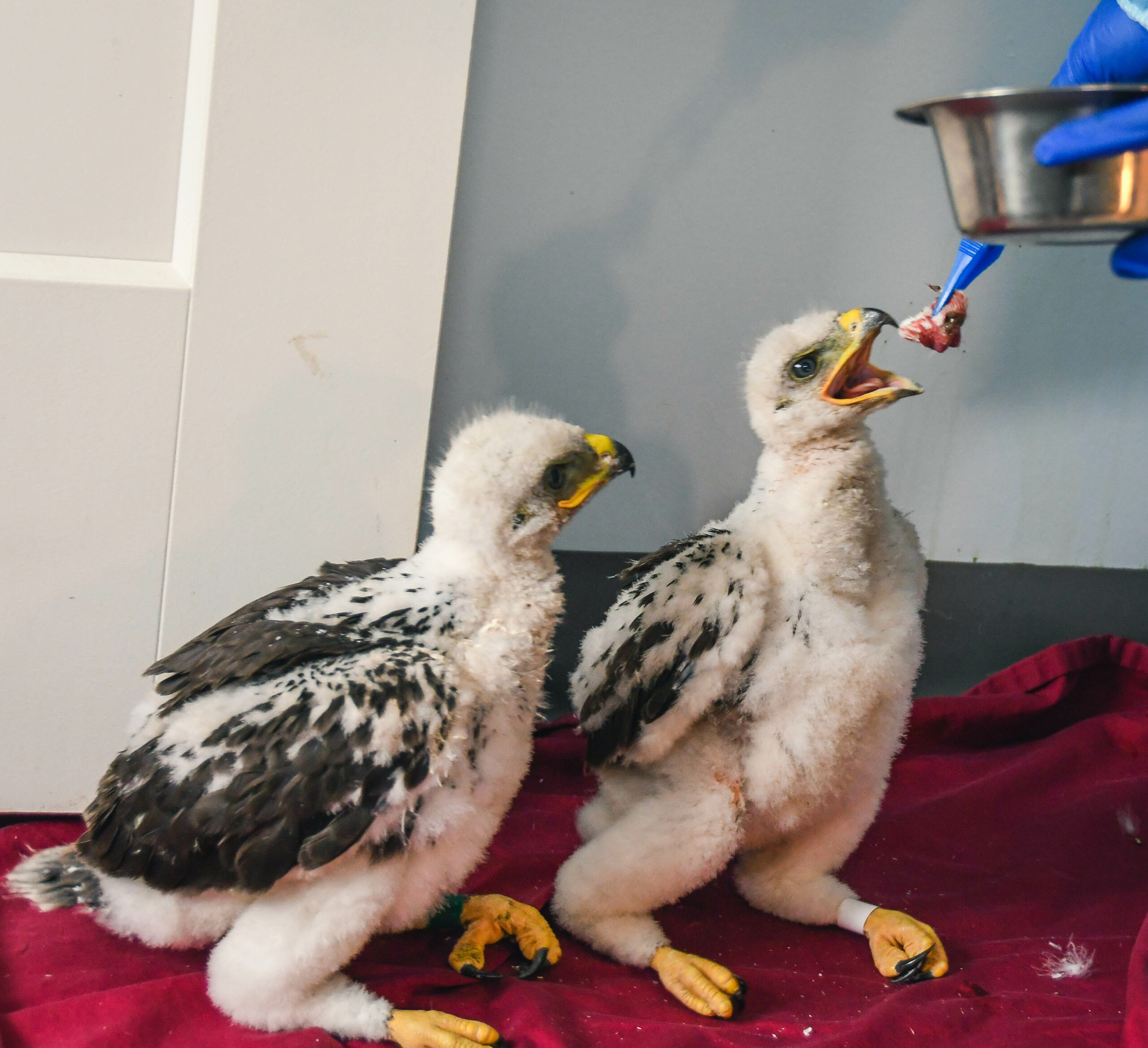Druid Eggs
As the Sun grows warmer, so life begins to show through the soil. Small signs at first – the daffodils and crocuses – then more green as the bluebells and wood anemones spread through the woodland. Plants are seen by some as inanimate greenery with no actual feelings and life force. But Druids see life in all living things, from rocks and stones, to rivers and springs, plants and trees – all life is sacred. Have you ever thought about how you recognise the beginning of Spring? Is it the plant life? The weather? How does a plant know when it is time to grow? The Spring Equinox falls on the 19th, 20th, or 21st of March each year. But a plant cannot tell the time or see a calendar. Yet it knows. If it has senses, then it has consciousness, if it has consciousness then it is more than an inanimate life form. So it is the return of life to the Earth that is celebrated at Alban Eilir, the time of balance.
One of the inner mysteries of Druidry is the Druid’s egg. Life-giving, it is the egg protected by the hare, which is the symbol of Alban Eilir – still celebrated by the giving of Easter eggs by the Easter bunny.
The early Christians began remembering the Resurrection every Sunday following its occurrence. In A.D. 325, the Council of Nicaea set aside a special day just to celebrate the Resurrection. The problem with an official day was deciding whether the Resurrection should be celebrated on a weekday or always on a Sunday.
Many felt that the date should continue to be based on the timing of the Resurrection during Passsover. Once Jewish leaders determined the date of Passover each year, Christian leaders could set the date for Easter by figuring three days after Passover. Following this schedule would have meant that Easter would be a different day of the week each year, only falling on a Sunday once in awhile.
Other believed since the Lord rose on a Sunday and this day had been set aside as the Lord’s Day, this was the only possible day to celebrate His resurrection. As Christianity drew away from Judaism, some were reluctant to base the Christian celebration on the Jewish calendar.
Finally the Council decided Easter should be celebrated on the Sunday following the first full moon after the vernal equinox. Since the date of the vernal equinox changed from year to year, calculating the proper date can be difficult. This is still the method used to determine Easter today, which is why some years we have Easter earlier than other years.
Since Easter is a celebration of Jesus’ Resurrection, you would think there wouldn’t be room for paganism. However Easter is one of the holidays most intertwined with pagan symbolism and ritual.
The origin of the word easter isn’t certain. The Vernerable Bede, an eighth-century monk and scholar, suggested that the word may have come from the Anglo-Saxon Eeostre or Eastre – a Teutonic goddess of spring and fertility. Recent scholars haven’t been able to find any reference to the goddess Bede mentioned and consider the theory discredited.
Another possibility is the Norse eostur, eastur, or ostara, which meant “the season of the growing sun” or “the season of new birth.” The word east comes from the same roots. In this case, easter would be linked to the changing of the season.
A more recent and complex explanation comes from the Christian background of Easter rather than the pagan. The early Latin name for the week of Easter was hebdomada alba or “white week,” while the Sunday after Easter day was called dominica in albis from the white robes of those who had been newly baptized. The word alba is Latin both for white and dawn. People speaking Old High German made a mistake in their translation and used a plural word for dawn, ostarun, instead of a plural for white. From ostarun we get the German Ostern and the English Easter.
Easter Bunny
What is the first thing that comes to mind when you think of Easter? As a Christian, the first image might be the cross or the empty tomb. For the general public, a blitz of media images and merchandise on store shelves makes it more likely that the Easter Bunny comes to mind. So how did a rabbit distributing eggs become a part of Easter?
There are several reasons for the rabbit, or hare, to be associated with Easter, all of which come through pagan celebrations or beliefs. The most obvious is the hare’s fertility. Easter comes during spring and celebrates new life. The Christian meaning of new life through Christ and a general emphasis on new life are different, but the two gradually merged. Any animals – like the hare – that produced many offspring were easy to include.
The hare is also an ancient symbol for the moon. The date of Easter depends on the moon. This may have helped the hare to be absorbed into Easter celebrations.
The hare or rabbit’s burrow helped the animal’s adoption as part of Easter celebrations. Believers saw the rabbit coming out of its underground home as a symbol for Jesus coming out of the tomb. Perhaps this was another case of taking a pre-existing symbol and giving it Christian meaning.
The Easter hare came to America with German immigrants, and the hare’s role passed to the common American rabbit. Originally children made nests for the rabbit in hats, bonnets, or fancy paper boxes, rather than the baskets of today. Once the children finished their nests, they put them in a secluded spot to keep from frightening the shy rabbit. The appealing nests full of colored eggs probably helped the customs to spread.
Back in Southern Germany, the first pastry and candy Easter bunnies became popular at the beginning of the nineteenth century. This custom also crossed the Atlantic, and children still eat candy rabbits – particularly chocolate ones – at Easter.
Easter Eggs
Next to the Easter bunny, the most familiar symbol is the Easter egg. Like others, the egg has a long pre-Christian history. Again there’s no certainty as to why it became associated with Easter.
Many Ancient cultures viewed eggs as a symbol of life. Hindus, Egyptians, Persians, and Phoenicians believed the world begun with an enormous egg. The Persians, Greeks, and Chinese gave gifts of eggs during spring festivals in celebration of new life all around them. Other sources say people ate dyed eggs at spring festivals in Egypt, Persia, Greece, and Rome. In ancient Druid lore, the eggs of serpents were sacred and stood for life.
Early Christians looked at the connection eggs had to life and decided eggs could be a part of their celebration of Christ’s resurrection. In addition, in some areas, eggs were forbidden during Lent; therefore, they were a delicacy at Easter. Since many of the earlier customs were Eastern in origin, some speculate that early missionaries or knights of the Crusade may have been responsible for bringing the tradition to the West.
In the fourth century, people presented eggs in church to be blessed and sprinkled with holy water. By the twelfth century, the Benedictio Ovorum had been introduced authorizing the special use of eggs on the holy days of Easter. The timing of this blessing would uphold the idea that Crusaders may have brought the tradition back. Even though eggs had been used previously, the Crusaders may have made the custom more popular and widespread.
In 1290, Edward I of England recorded a purchase of 450 eggs to be colored or covered with gold leaf. He then gave the eggs to members of the royal household.
Once the custom became accepted, new traditions began to grow up around it. Eggs were dyed red for joy, and in memory of Christ’s blood. Egg rolling contests came to America from England, possibly as a reminder of the stone being rolled away.
What about the familiar Easter Egg hunt? One source suggested that it grew out of the tradition of German children searching for hidden pretzels during the Easter season. Since children were hiding nests for the Easter Bunny to fill with eggs at the same time they were hunting pretzels, it was only a small leap to begin hiding eggs instead.
Lamb
Of all Easter symbols, the lamb is probably the most strongly Christian. Other than the fact that lambs are young animals born in springtime, it has no strong ties to pagan traditions.
The lamb comes from the Jewish Passover, where each family killed a lamb as a sacrifice. When Christ became the Passover Lamb for everyone, the lamb became a symbol for His sacrifice.
New Clothes at Easter
New clothes have long been associated with the idea of newness and a fresh beginning. The familiar custom of having new clothes for Easter probably began with early Christians wearing new white robes for baptism during Easter Vigil services. Later, the custom expanded to everyone wearing new clothes in celebration of his or her new life in Christ.
Sunrise Services
The familiar sunrise service is a relatively new addition to Easter. A group of young Moravian men in Hernhut, Saxony held the first recorded sunrise service in 1732. They went to their cemetery called God’s Acre at sunrise to worship in memory of the women who went to the tomb early on the first Easter morning and discovered it empty. Moravian immigrants brought the custom to America, with the first service in the United States held in 1743.
Easter Lilies
The Easter lily is another new addition to Easter celebrations. Throughout the years, painters and sculptors used the white Madonna lily to symbolize purity and innocence, frequently referring to Mary. This lily doesn’t force well, so nurseries couldn’t get the flower to bloom in time Easter.
In the 1880s, Mrs. Thomas Sargent brought Bermuda lily bulbs back to Philadelphia. A local nurseryman, William Harris, saw the lilies and introduced them to the trade. A more practical consideration was that they were easy to force into bloom in time for the Easter season. From there, they Bermuda lily, now the familiar Easter lily, spread throughout the country.






